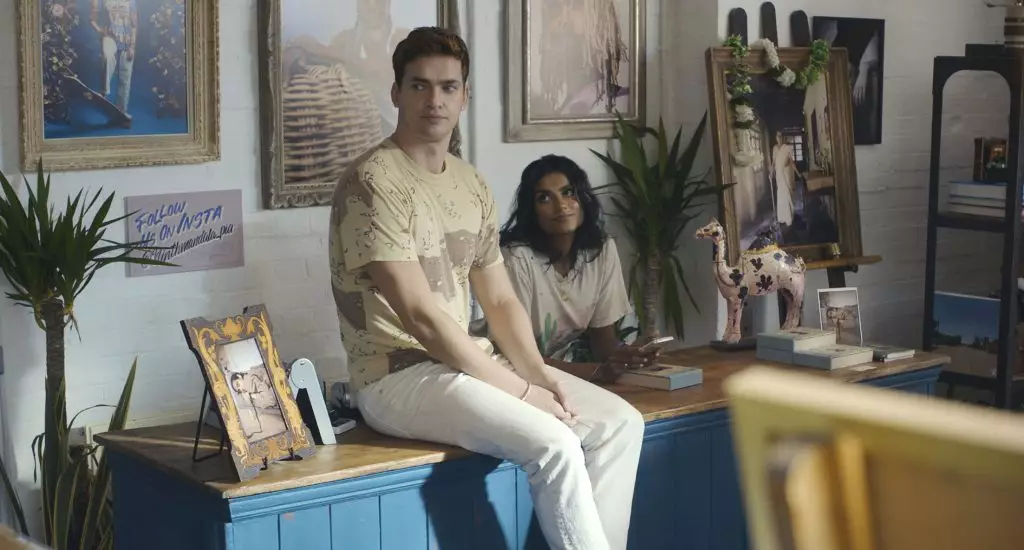“Picture This,” now gracing Amazon Prime Video, isn’t just another entry into the crowded directory of wedding-themed rom-coms; it’s a timely exploration of aspiration, friendship, and the complex nature of romance in contemporary society. Inspired by the Australian film “Five First Dates,” this movie cleverly flips the traditional narrative. No longer is love merely a fairy-tale ending set against the backdrop of a picturesque wedding; instead, it challenges the audience to reconsider what is truly meaningful in matters of the heart.
The film unfolds through the life of Pia, played by the talented Simone Ashley, who is caught in a whirlwind of familial expectations and personal ambition. Her reluctance to marry isn’t simply teenage rebellion; it’s a sincere desire to chase her photography dreams—something often overshadowed by societal pressures. This duality of ambition versus expectation brilliantly speaks to a generation grappling with identity and purpose. Artistic pursuits are often romanticized, yet Pia’s struggle to maintain her business—the Ninth Mandala—adds an authentically refreshing layer to her character.
Empowered Friendships Amidst Chaos
Supporting her through this chaos is Jay, depicted by Luke Fetherston, who embodies the supportive, modern best friend. His character, a gay man providing emotional scaffolding to Pia, showcases a symbiotic relationship that challenges traditional gender roles. In a culture often shrouded in heteronormative scripts, seeing such a friendship at the forefront is not just refreshing; it’s essential. It reflects a broader truth about support systems failing to confine themselves to romantic links, advocating the idea that love exists in many forms, often in friendships that deepen our understanding of self.
While wedding setups have usually served as portals to explore romantic entanglements, “Picture This” cleverly subverts this trope, making weddings a site of personal growth instead. As Pia navigates her family’s attempts to line her up for five dates, her journey becomes less about finding a traditional partner and more about self-acceptance and empowerment. It’s as if the film is asserting: to love another, one must first learn to love oneself—a sentiment that has never felt more relevant.
Striking Soundtrack and Cultural Resonance
An impressive soundtrack adds yet another dimension to the film. With contributions from notable artists, including a unique original by Kiran + Nivi, the music acts as a character in its own right. Songs become the emotional undercurrents propelling Pia’s journey, complementing her highs and lows with a multitude of voices that echo the film’s themes. The inclusion of various genres and artists speaks to a multicultural palette, resonating with a diverse audience.
Moreover, the phenomenon of wedding settings—often spaces for stress and infighting—becomes a stage for introspection and transformation through Pia’s lens. This narrative shift offers viewers a chance to reflect on their own relationships, both platonic and romantic, and the roles they play in each other’s lives.
In a time when many romantic comedies fall into formulaic traps, “Picture This” emerges as a breath of fresh air. It’s not so much about the destination of love but rather the convoluted journey towards understanding it. Through its comedic yet poignant storytelling, the film dares its viewers to see weddings not just as celebrations of love but as opportunities for self-exploration. And in this portrayal, it begins to redefine the genre, forging a new pathway for romantic comedies that resonate deeply in an ever-evolving cultural landscape.



Leave a Reply